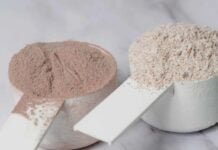Throughout a woman’s menstrual cycle, hormonal shifts significantly impact physical strength and performance. Understanding these fluctuations can help optimize training and recovery. This article breaks down how estrogen, progesterone, and testosterone affect your ability to lift, endure, and recover, offering actionable strategies to work with your body, not against it.
The Hormonal Rollercoaster & Strength
The idea that strength varies throughout the cycle isn’t just anecdotal. Hormonal peaks and valleys directly influence muscle performance. While research is still evolving, experts agree that ignoring these shifts can hinder progress.
Period Phase: Low Energy, Gentle Approach
During menstruation, hormone levels are at their lowest. Energy dips are common, making this an ideal time for rest or light activity. Many women report reduced strength and endurance during this phase. The key is to listen to your body: don’t force intense workouts if you’re feeling depleted. Prioritize recovery and gentle movement like walking or yoga.
Follicular Phase: Strength Surge
As your period ends, estrogen, progesterone, and testosterone begin to rise. This phase is often marked by increased energy and strength. It’s an excellent time for challenging workouts, heavy lifting, and pushing your limits. Take advantage of this hormonal boost to maximize gains.
Ovulation: Peak Performance
Around ovulation, estrogen peaks, further enhancing strength and endurance. This is another window for intense training and setting personal records. Many women report feeling at their physical peak during this phase.
Luteal Phase: Fluctuating Energy
The luteal phase (after ovulation) is marked by fluctuating hormones. Progesterone rises, which can lead to increased body temperature and fatigue. Energy levels may dip, making workouts feel harder. The key is to adjust intensity and listen to your body. Some days you may feel strong, others you may need to scale back.
Practical Strategies for Cycle-Syncing
Working with your cycle isn’t about restriction, but about optimization. Here’s how to adjust your fitness routine:
- Prioritize Rest: During menstruation and periods of low energy, prioritize recovery.
- Schedule Intense Workouts: Capitalize on the follicular and ovulatory phases for heavy lifting and high-intensity training.
- Adjust Nutrition: Increase protein intake during strength-peak phases to support muscle growth.
- Listen to Your Body: The most important thing is to pay attention to how you feel and adjust accordingly.
The Bigger Picture
Understanding how hormones affect strength is about more than just fitness. It’s about recognizing the unique biological realities of being a woman and working with your body, not against it. By cycle-syncing your fitness routine, you can maximize gains, minimize fatigue, and achieve your goals more effectively




















